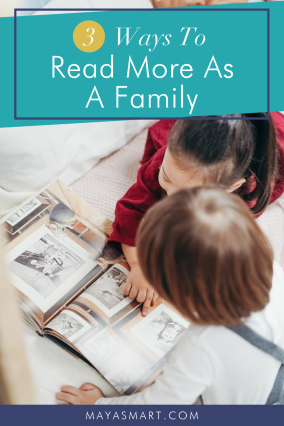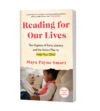Stay-at-home orders resulting from the new coronavirus have got many of us holed up inside 24/7 with kids and partners. All that togetherness can mean lots of quality time, if we make it that way. Luckily, books can be heroes every family needs to experience wonder, connection, and enjoyment during long days spent indoors.
Engaging texts keep independent readers happily occupied and create valuable time for parents to work, relax, or tackle household chores. Reading to yourself, reading aloud to kids, and encouraging kids to listen to recordings are great options for family reading time. For kids of all ages, reading together can bookend daily schedules to create relaxing rituals and a calming cadence to our days.
Here are three ways to boost book access and read more as a family during the pandemic:
1) Get digital library access. Visit your public library’s website to explore offerings for streaming or downloadable ebooks. Austin Public Library, for example, gives users access to OverDrive Kids, OverDrive Teens, TumbleBook Library, and MakeMake, a Spanish-language ebook source. Readers just need their library card number and password to log in via the web or a mobile device app. As with traditional library borrowing, there may be limited availability of individual titles and limits on how many books you can check out at once.
No library card? No problem. There are other ebook sources, such as Epic!, that you can sign up for directly. Epic! has an extensive collection of 40,000 ebooks, learning videos and quizzes for kids 12 and under. Free for elementary school teachers and librarians, the site costs $7.99 per month for parents, who can be assured that no ads or in-app purchases disrupt the reading immersion. Scribd offers a large ebook and audiobook library for adults and teens.
With so many ebooks at your fingertips, you can put kids’ I-don’t-have-anything-to-read complaints to bed immediately—and read more than you ever have before, yourself.
2) Listen up with audiobooks. Yes, audiobooks count as reading, so queue some up to enjoy together—and to wind down at the end of the day. Researchers, teachers, and librarians have all lauded audiobooks’ ability to engage even the most reluctant reader. A good story well narrated can boost oral language skills, vocabulary exposure, background knowledge, and reading comprehension. And audiobooks can be a great introduction to new-to-you cultures, ideas, and language traditions to boot. The format also allows families to experience multicultural content without stumbling over unfamiliar dialects or words.
Just as with ebooks, readers can check out audiobooks through public libraries that subscribe to OverDrive, Hoopla, and similar services. Libby, OverDrive’s much-loved app, delivers thousands of library-loaned ebooks and audiobooks directly to users’ phones or tablets. Librivox, another free audiobook option, offers public domain books read by volunteers. Little Women, anyone?
Vooks, an ad-free digital library, brings children’s picture books to life with music, professional narration, and eye-catching animation. It highlights each word in bold as it’s read by the narrator, making it a great option for young readers navigating text on their own and for parents who are unable to read aloud to children due to language or other barriers. Vooks offers a one-month free trial and then is $4.99/month.
Audible, Amazon’s audiobook division, is offering a limited selection of children’s content for free during coronavirus school closings. Kids can now stream stories, from fairytales and folktales to mystery and history, in six languages via desktop, laptop, phone, or tablet. Audible’s paid plans start at $14.95/month. Other paid audiobook subscription services include Audiobooks.com, Scribd, Kobo, and Downpour. Libro.fm stands apart by allowing you to buy great audiobooks from your local, independent bookseller. iTunes, Google Play, and Nook let you buy individual titles without a subscription.
3) Tune into virtual storytimes with authors. Kwame Alexander read from his book, The Crossover, on Instagram Live every day for a week. Author and illustrator Mo Willems does daily lunchtime doodles on YouTube thanks to a new Kennedy Center @ Home series. Oliver Jeffers captivated an audience of 267,000 followers by reading aloud on Instagram.
Author and celebrity-led storytimes are at an all-time high as people reach out across the social distance to bring kids and families joy. But how do you find them? There’s no comprehensive clearinghouse of online author appearances so your best bet is to follow your favorite authors and children’s book publishers on social media and keep an eye out for appearances in your feeds. Searching related hashtags like #operationstorytime and #stayathomestorytime is hit or miss.
It’s worth the effort to tune in when you can. A story read by its author often sparks greater reading interest and enthusiasm in kids long after the tale ends.
Pin Me for Reference :


